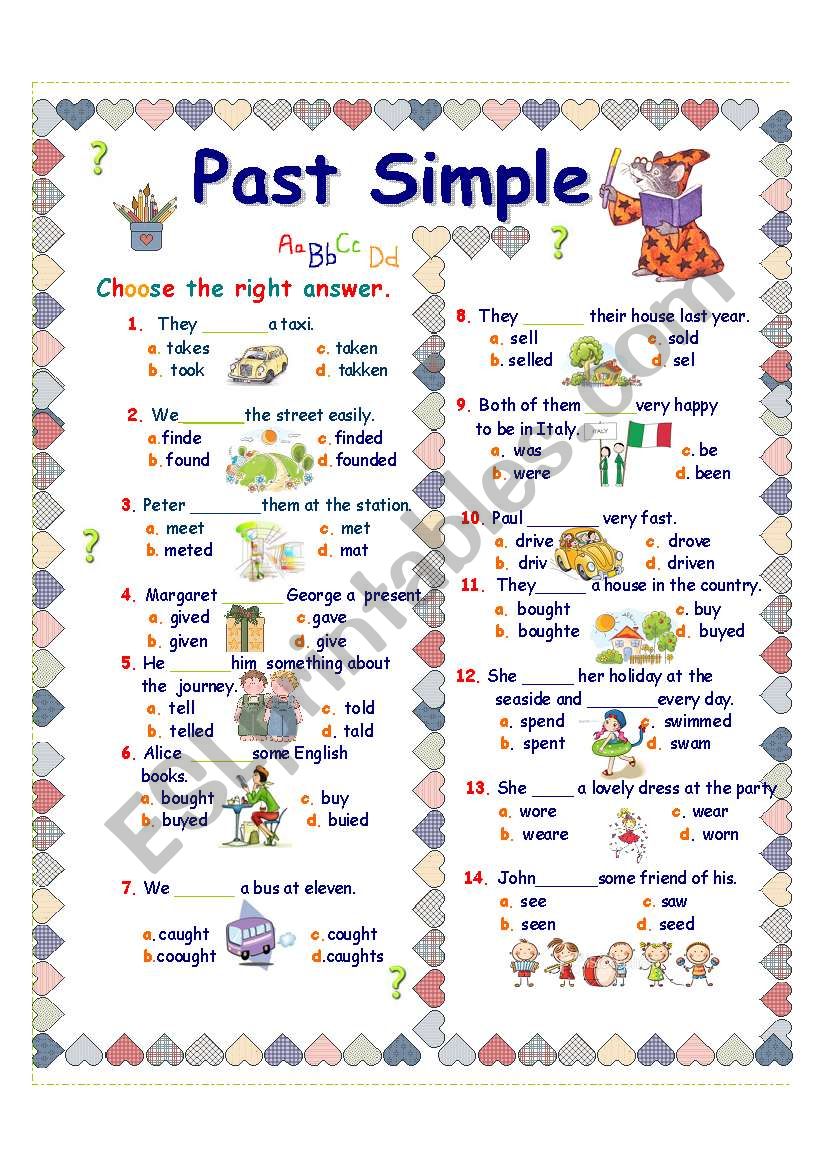

This type includes irregular verbs for which all three columns are the same.Įxamples include “cut / cut / cut,” “hurt / hurt / hurt,” and “put / put / put.” Type 1: Verbs with the Same Base Form, Past Simple, and Past Participle


You can split irregular verbs into the following four types: It can be helpful to think of irregular verbs in different groups depending on how many columns are the same. And for others still, all three of the columns are different. For others, two of the columns are the same. You may have noticed that for some of the verbs in the table, all three columns are the same. How Many Different Types of Irregular Verbs Are There? The past participle is the conjugation you use to show that an action took place prior to some other event, or in a way that has some connection to the present. The third column shows the past participle of the verb. The past simple tense is the conjugation you use to show that an action took place in the past. The second column shows the past simple tense of the verb. In the following table, the first column shows you the base form, also known as the infinitive form, of each verb. Let’s take a look at the most common irregular verbs we use in English. What Are the Most Common Irregular Verbs in English? These include some of the most commonly used verbs in the language, such as “to be,” “to have,” and “to say.”īritish English actually has more irregular verbs than American English, because some conjugations are spelled differently.įor example, “to spell” is a regular verb in American English, where the past tense is “spelled,” but an irregular verb in British English, where the past tense is “spelt.” There are over 200 irregular verbs in English. How Many Irregular Verbs Are There in English? to read: “read” (past simple and past participle).to write: “wrote” (past simple) and “written” (past participle).to sleep: “slept” (past simple and past participle).Other examples of irregular verbs include: You would say “I bite the apple” (present tense), “I bit the apple” (past simple), or “I have bitten the apple” (past participle). The verb “to bite” is irregular, because its past tense is “bit,” not “bited.” It breaks the normal rule for how you change a verb to past tense. Its past simple and/or past participle forms are created in a way that doesn’t involve adding a “-d” or “-ed” at the end. to paint: “painted” (past simple and past participle)Īn irregular verb, on the other hand, is any verb that doesn’t follow that rule.to finish: “finished” (past simple and past participle).to love: “loved” (past simple and past participle).You would say “I jump over the fence” (present tense), “I jumped over the fence” (past simple), or “I have jumped over the fence” (past participle). A regular verb is one that forms its past simple or past participle form by adding “-ed” or “-d” to its base form.įor example, “to jump” is a regular verb, because to change it to past tense, you simply add “-ed” to form the word “jumped.” Let’s start by talking about what a regular verb is. Why Are Some Verbs Irregular While Others Are Not?.What’s the Best Way to Learn and Remember Irregular Verbs?.How Many Different Types of Irregular Verbs Are There?.What Are the Most Common Irregular Verbs in English?.How Many Irregular Verbs Are There in English?.


 0 kommentar(er)
0 kommentar(er)
